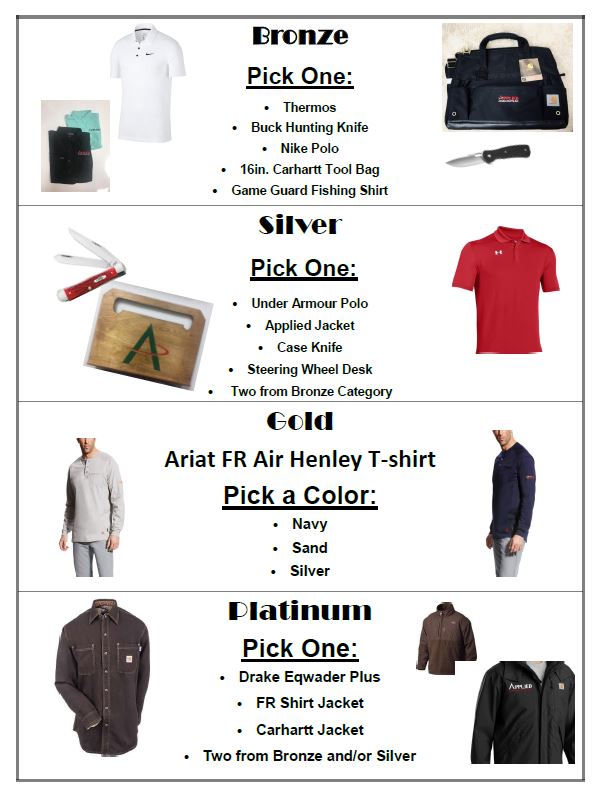Back to the Basics Slips, Trips and Falls
 Back to the Basics Slips, Trips and Falls
Back to the Basics Slips, Trips and Falls

With projects starting back up, slips and falls occur more frequently than any other type of accident on our projects across the country. Along with the alarming frequency of these accidents, slips and falls can result in severe disabling injuries, especially to the head and back.
Although vehicular accidents lead the accident statistics year after year in the US, slips, trips and falls continue to remain the leading cause of dangerous and disabling injuries for Applied inspectors.
Falls can be from same level or from different levels. Falls from different levels generally tend to be low frequency but high severity and are more common among workers in the pipeline construction industry. Slips and trips are more common in same level falls. In addition to the concern for construction site accidents on the ROW in places such as matt roads and bridges, traversing in and out of bell holes and getting in and out of your vehicle on the right-of-way, these accidents account for 40-45% of worker injuries in our Applied injury report.
Corrective action for accidents is often more complicated than they appear. Different factors affect slip, trips and falls. Uneven surfaces on the right-of-way and addressing maintenance issues are some of the single most important factors that are within a project manager’s control. Reinforcing good housekeeping will also lead to a reduction in slips, trips and falls as well as other types of injuries. Having inspectors and co-workers bring attention to these hazards is the first step in avoiding the potential for a significant accident.
On your jobsite, preform a Risks Assessment or a Jobsite Hazard Analyses with Slips, Trips and Falls as your focus. Look for signs of:
- Level changes in walking areas
- Adequacy of illumination from shaded areas or night work
- Contamination/Spills from equipment or maintenance trucks
- Road hazards, potholes, thick gravel areas
- Potential for distraction, open trenches, unmanned bell holes without fencing
- Characteristics of footwear, unapproved work boots
All of these are contributing factors in Slip, Trips and Falls. Let’s work together to make 2020 Applied’s safest year yet.
May Near Misses
Air compressor being used without whip checks-
stopped work went over safety concerns and had the contractor install whip checks
Employees working out of a man basket without being tied off properly-
stopped work had them tie off properly with a yoyo
While hydro testing a poly line, the contractor had signs, red barricade tape and safety fence for barricades and barriers around above ground fabrication, also did a SIMOPS with the contractor's supervisor and safety person. The contractor working on an adjacent line kept coming into our exclusion zone.
We stopped the crew for the 2nd time explained to them the situation again and asked them to please get their supervisor and or safety person. Supervisor arrived and took care of the situation; we had no more issues with the other crew.
X-Ray crew had extension ladder extended into pipe rack. Slope/pitch of ladder was well over the suggested 4:1 ratio. (See attached picture) The feet of the ladder were also placed on loose rocks that could shift, causing it to slip out when someone began to climb it. The ladder was not tied off but couldn’t be until one of the crew members climbed up to tie it off, putting him in danger of the ladder slipping on the rocks as I stated above. The ladder could not be placed any closer to lessen the slope/pitch, due to a structure blocking it. They were going to be working at a height of at least 15 feet above the working surface. I asked if they could use a man lift for better access. The worker stated that they did not have a full body harness.
At this point, I Stopped their Work, luckily before they began to ascend the ladder. I asked the Electricians if they had a harness the X-Ray techs could use, and they loaned them one. The X-Ray tech put the harness on, found a man lift and I spotted him over to the location where his co-worker took over spotting. I then advised them to continue spotting while moving the man lift. No further issues and crew completed their task safely.
A welder was welding in an area that required a hot work permit, one was not issued.
stopped work held a safety meeting with operations and contractor and explained proper communication and requirements for hot work.
A welder was grinding without a face shield.
Work was stopped and the welder was reminded to don all PPE before performing any task, even for small quick tasks.
We are pleased to announce that we have partnered up with Boot Barn to offer all Applied Consultants inspectors a 15% discount on all purchases “work related” from the Boot Barn, Nation Wide. Be sure to tell them you work for Applied Consultants and use the key word: “Safety First” to receive the discount.
API1169 Test Dates:
NOTICE: Prometric has closed most testing sites until April 17th. Due to these closures, API has extended this testing window until May 17th. Please check their websites for further instructions.
August 14 - 28, 2020
Registration Deadline: July 12th, 2020
December 4 - 18, 2020
Registration Deadline: October 2nd, 2020
May Winners
|
|
 |
- Created on .
